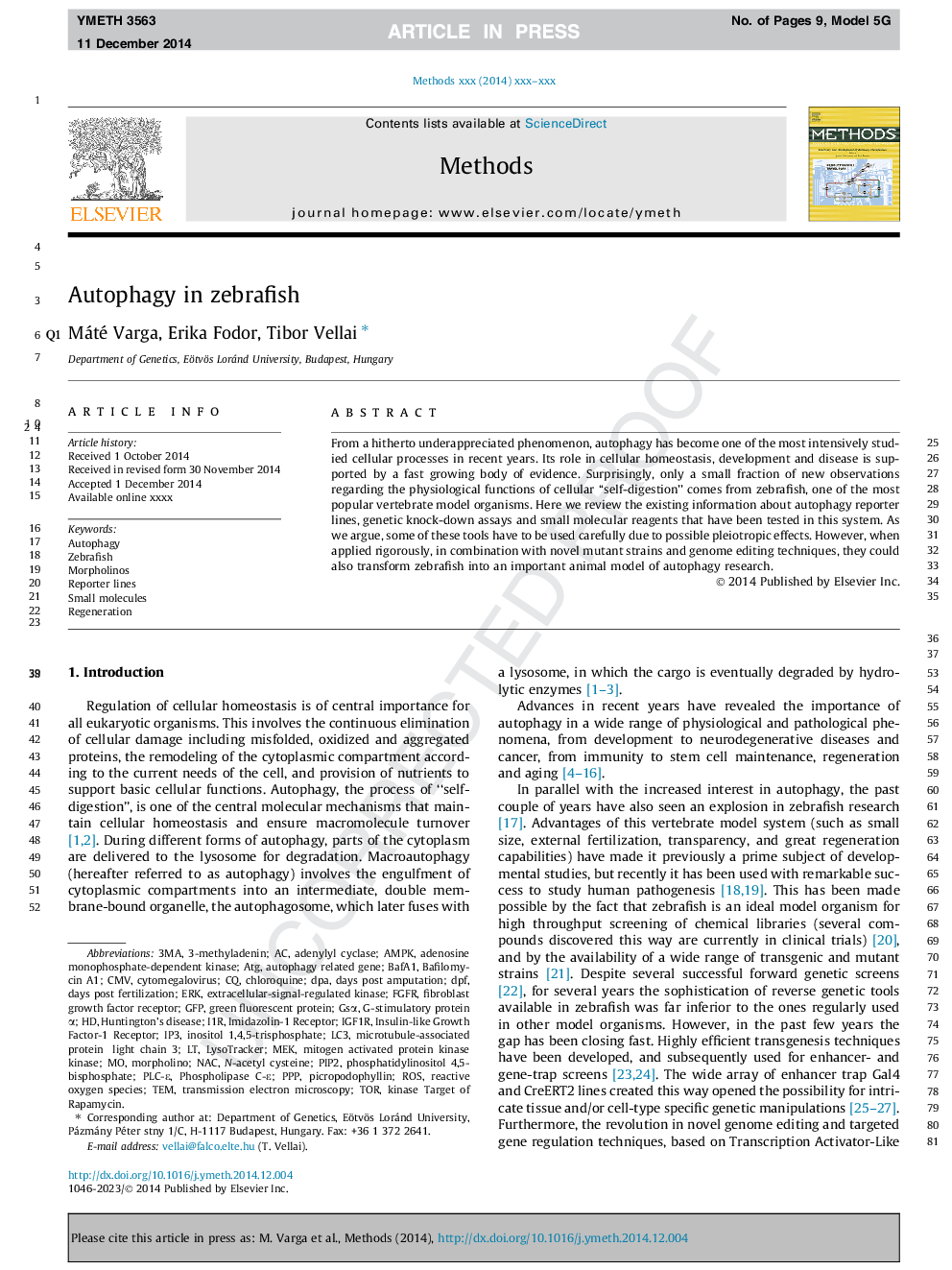| Article ID | Journal | Published Year | Pages | File Type |
|---|---|---|---|---|
| 8340693 | Methods | 2015 | 9 Pages |
Abstract
From a hitherto underappreciated phenomenon, autophagy has become one of the most intensively studied cellular processes in recent years. Its role in cellular homeostasis, development and disease is supported by a fast growing body of evidence. Surprisingly, only a small fraction of new observations regarding the physiological functions of cellular “self-digestion” comes from zebrafish, one of the most popular vertebrate model organisms. Here we review the existing information about autophagy reporter lines, genetic knock-down assays and small molecular reagents that have been tested in this system. As we argue, some of these tools have to be used carefully due to possible pleiotropic effects. However, when applied rigorously, in combination with novel mutant strains and genome editing techniques, they could also transform zebrafish into an important animal model of autophagy research.
Keywords
GFPATGIP3IGF1RLC3ERK3MAFGFRNACPPPautophagy related geneGsαDPFBAFA1PIP2TORI1RDPAAMPKinositol 1,4,5-trisphosphateMitogen activated protein kinase kinaseROSadenylyl cyclaseAutophagyTemdays post fertilizationRegenerationbafilomycin A1Huntington’s diseasemicrotubule-associated protein light chain 3cytomegalovirusCMVphosphatidylinositol 4,5-bisphosphateMEKMorpholinosmorpholinoSmall moleculesTransmission electron microscopyN-acetyl cysteinegreen fluorescent proteinPicropodophyllinChloroquineextracellular-signal-regulated kinaseZebrafishReactive oxygen speciesInsulin-like growth factor-1 receptorfibroblast growth factor receptor
Related Topics
Life Sciences
Biochemistry, Genetics and Molecular Biology
Biochemistry
Authors
Máté Varga, Erika Fodor, Tibor Vellai,
